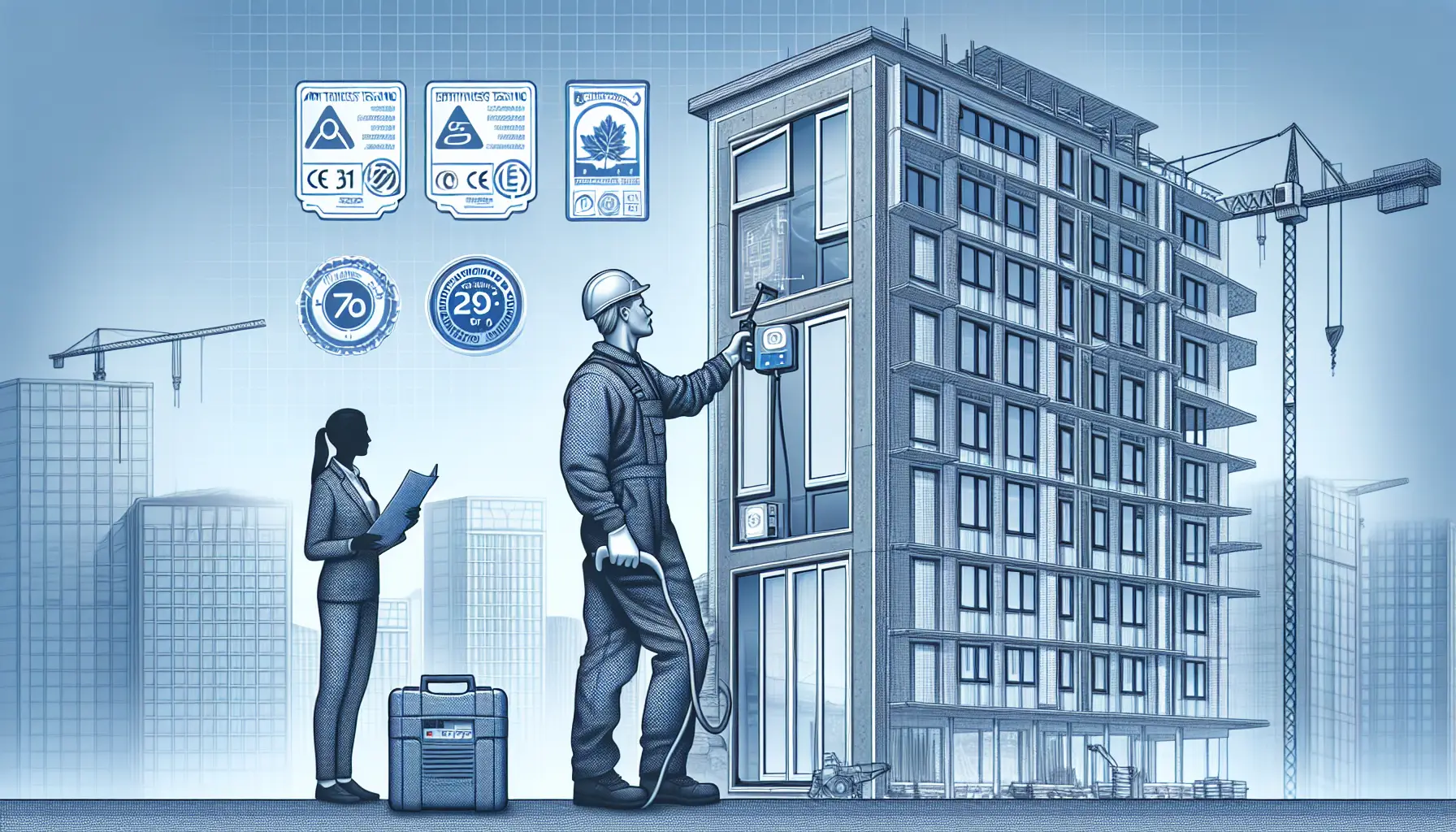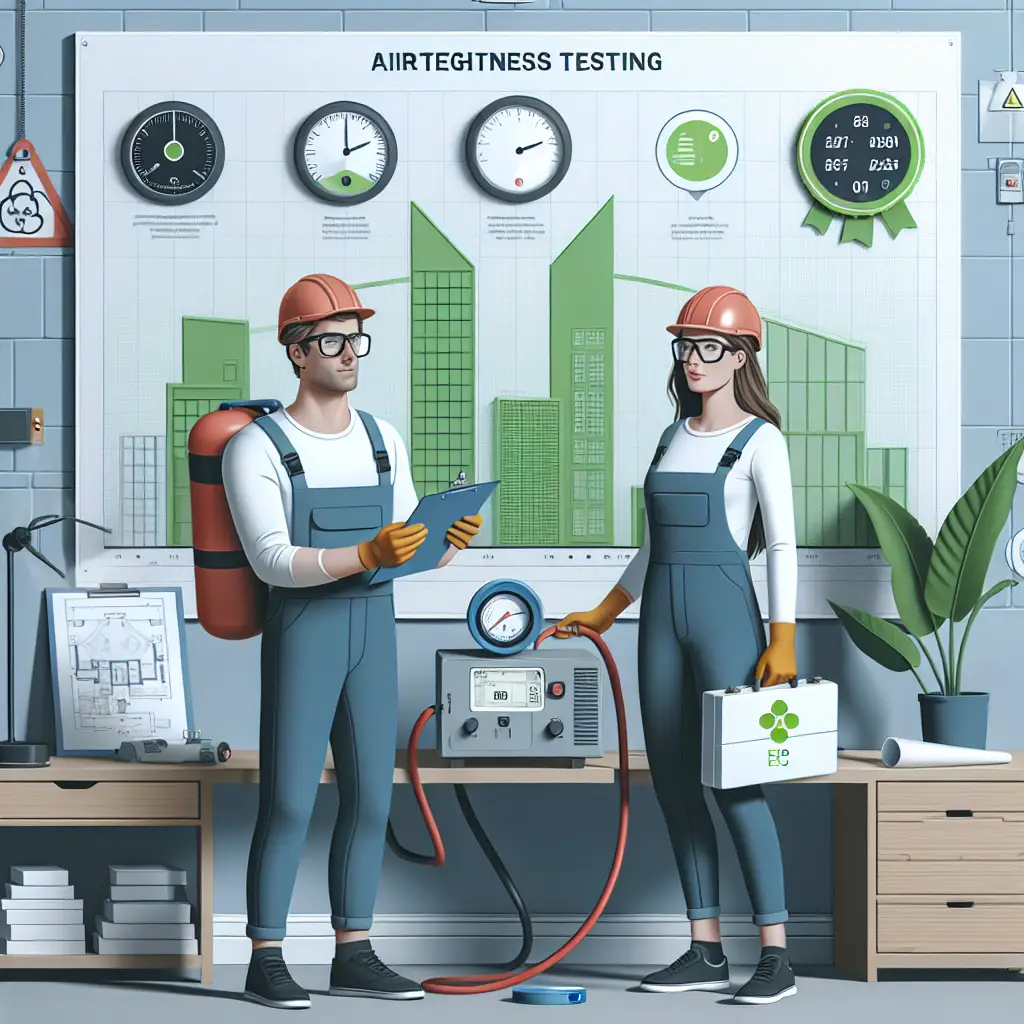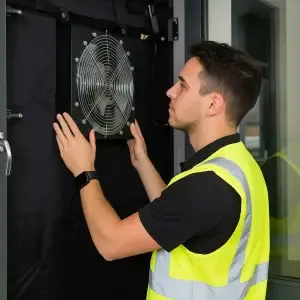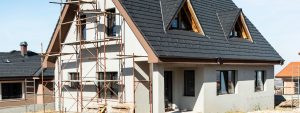The Crucial Role of Airtightness Testing in Building Certifications
The demand for sustainable and highly efficient buildings has been growing steadily, driven by the mounting pressure of climate change and the need for healthier living environments. Among the myriad of factors contributing to a building’s sustainability, airtightness testing emerges as a pivotal process in ensuring optimal building performance. It plays a significant role in achieving various building certifications by aligning with energy efficiency targets, enhancing indoor air quality, and supporting overall building integrity. In this article, we will delve into the multifaceted benefits of airtightness testing and its contribution to achieving different building certifications.
Energy Efficiency and Compliance
In terms of energy efficiency, airtightness testing is crucial for verifying that a building’s enclosure is tightly sealed to prevent unnecessary air leakage, which can account for up to 30% of a building’s energy consumption. Methods such as blower door tests, exemplified by standards like ASTM E779 and ASTM E1827, are instrumental in assessing how airtight a building is. By identifying leaks and addressing them, these tests help ensure the building complies with energy codes and standards, such as the National Energy Code for Buildings (NECB) and the National Building Code of Canada (NBC).
- Reduction of Energy Consumption: By sealing air leaks, buildings require less energy for heating and cooling. This not only optimizes resource usage but also reduces carbon footprints.
- Compliance with Standards: Complying with recognised standards ensures that buildings meet local and national regulations. This is essential for both legal compliance and societal responsibility.
Indoor Air Quality (IAQ)
Beyond energy efficiency, airtight buildings are directly beneficial in promoting healthier indoor environments. By minimising air leaks, these buildings significantly reduce the intrusion of outdoor pollutants and moisture that can foster mould growth and other IAQ issues.
- Pollutant Reduction: Airtight buildings efficiently block external pollutants, thereby contributing to cleaner, more breathable indoor air.
- Moisture Control: By managing air leakage, these buildings mitigate the risk of moisture penetration, which is vital for preventing damp-related problems.
Certifications like LEED and WELL are particularly focused on indoor air quality, with airtightness testing serving as a crucial step to ensure buildings adhere to these high standards.
Building Certifications
Airtightness testing is often a requirement or a highly beneficial component in meeting various building certification programmes. Here are some of the most influential certifications where airtightness plays a key role:
LEED Certification
The LEED (Leadership in Energy and Environmental Design) certification evaluates buildings based on their energy efficiency, indoor environmental quality, and use of sustainable materials. Airtightness testing helps buildings gain points in the energy and atmosphere categories, where enhanced ventilation and air quality testing are critical for compliance.
WELL Certification
WELL Certification is centred on human health and wellness, with a pronounced emphasis on indoor air quality. Through airtightness testing, buildings can maintain optimal IAQ levels, a fundamental requirement in achieving WELL certification.
Passive House Certification
Known for its rigorous requirements, Passive House certification mandates comprehensive airtightness testing to validate that a building meets stringent air permeability levels, such as n50 = 0.4 h−1 for passive houses. This involves detailed scrutiny of penetrations and building envelopes to ensure minimal air leakage.
RESET Air Certification
RESET Air certification prioritises indoor air quality, demanding continuous monitoring of air quality parameters. While not exclusively dependent on airtightness, maintaining a well-sealed building envelope is critical in controlling indoor air pollution levels and adhering to the ongoing monitoring expectations of this certification.

Professional Certifications and Training
Conducting airtightness tests requires precise skills and knowledge. Professionals in this field often undergo specialised training and certification programmes to ensure testing is performed accurately and effectively. For example, the Air Tightness Technician (ATT) training and certification provided by Building Efficiency Resources Ltd (BER) equips professionals with the capability to conduct blower door, duct leakage, and ventilation testing reliably. Such certifications guarantee that the findings from tests accurately represent the building’s performance.
Instrumentation and Standards
Airtightness testing must adhere to industry standards like ASTM E779, ASTM E1827, and ISO 9972. These outline exact methods for determining air leakage rates using fan pressurisation, ensuring that testing procedures are both rigorous and consistent. Compliance with these standards is indispensable for achieving and maintaining various building certifications.
The Broader Impacts of Airtightness Testing
The implications of achieving airtightness extend beyond energy efficiency and indoor air quality. It supports the creation of buildings that provide occupants with healthier and more comfortable living and working conditions. By finely tuning a building’s envelope, architects and builders can design structures that not only withstand environmental pressures but also contribute actively to sustainable urban development.
- Occupant Comfort: By maintaining a stable indoor environment, airtight buildings ensure consistent thermal comfort for occupants.
- Building Longevity: Reduced air leakage helps prevent structural damage caused by moisture and environmental factors, thereby extending the lifespan of the building.
For organisations like Ratio Seven, which are committed to fostering sustainable and high-performance buildings, airtightness testing forms a cornerstone of our approach to building assessments. Our expertise and commitment to quality assurance in testing enable us to assist our clients in not only meeting but exceeding current building certification standards.
FAQs
What is a blower door test, and why is it important?
A blower door test is a method used to measure a building’s airtightness by using a powerful fan to depressurise the structure. The test identifies air leaks, quantifies air leakage, and is crucial for determining energy efficiency and compliance with building codes and standards. Accurate performance data from blower door tests help guide necessary improvements for achieving energy certification credits and enhancing overall building performance.
How does airtightness contribute to sustainable building design?
Airtightness is a fundamental aspect of sustainable building design as it facilitates a reduction in energy consumption by preventing unwanted air leaks. This results in lower energy bills and a decrease in greenhouse gas emissions, contributing to a building’s sustainability. Furthermore, maintaining good airtightness improves indoor air quality by reducing the infiltration of outdoor pollutants, aligning with health and wellness targets integral to sustainability.
Can airtightness testing support cost savings in construction and maintenance?
Yes, airtightness testing can lead to significant cost savings in both construction and long-term maintenance. By identifying and rectifying air leaks before construction is completed, potential problems can be resolved early. This reduces the need for future repairs and minimises unexpected maintenance costs. Moreover, improved airtightness decreases energy expenditure, leading to financial savings over the building’s lifecycle.
In summary, airtightness testing is indispensable in the quest for achieving high-performance building certifications. It not only enhances energy efficiency and indoor air quality but also aligns buildings with rigorous standards and regulatory requirements. Through precise testing processes and standards adherence, stakeholders can ensure their properties are well-sealed, providing enhanced occupant comfort and reduced environmental impact. At Ratio Seven, our expertise in airtightness testing aids clients in navigating the complexities of building certifications, positioning them for success in sustainable building achievements.




